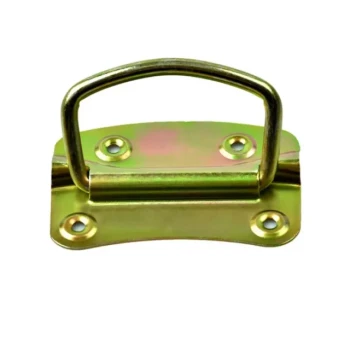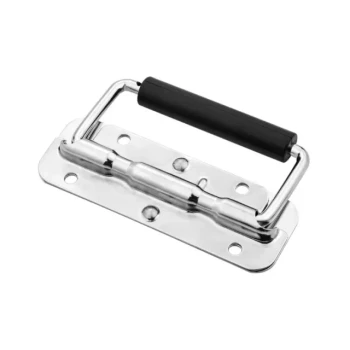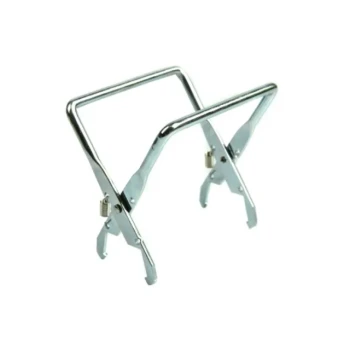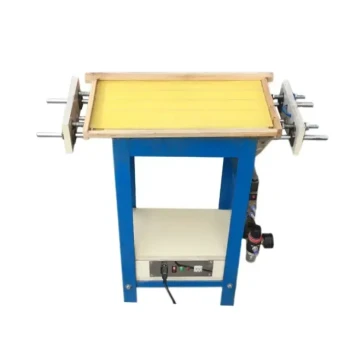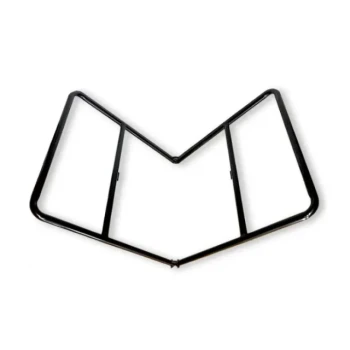To maintain optimal conditions for bees during transport, you must focus on two critical factors: temperature and ventilation. The primary danger is overheating, which can quickly stress or kill a colony confined in a moving vehicle. The best practice is to move bees during the coolest parts of the day, such as early morning or after sunset, and to ensure constant, unimpeded airflow to the hive or nuc box.
The core challenge in transporting bees is managing the immense heat they generate as a collective. A sealed, poorly ventilated hive can become an oven in a surprisingly short time, making active temperature control and maximized airflow your most important responsibilities.
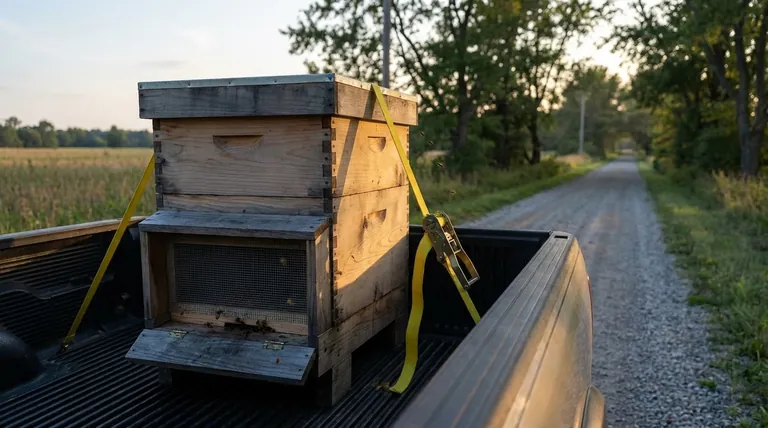
The Core Principle: Preventing Overheating
A honeybee colony is a superorganism that generates a significant amount of heat. When their movement is restricted during transport, that heat becomes concentrated and dangerous without proper management.
Why Heat is the Primary Danger
Bees vibrate their wing muscles to regulate their nest temperature, an activity that produces substantial warmth. In a confined space like a car or a sealed nuc box, this heat has nowhere to go.
This trapped heat quickly raises the internal temperature to lethal levels, causing extreme stress, melting wax combs, and ultimately killing the colony.
The Critical Role of Airflow
Ventilation is the single most effective tool for dissipating the colony's self-generated heat. Constant airflow removes warm, stale air and replaces it with cooler, fresh air.
This is why hive entrances are screened for transport and why mesh covers are often used instead of solid inner covers. Any method that promotes air exchange is beneficial.
Timing Your Move Strategically
The simplest way to reduce the risk of overheating is to transport your bees when the ambient temperature is lowest.
Moving your bees after sunset or before sunrise leverages naturally cool air, placing far less strain on both the bees and your cooling methods.
Practical Transport Methods and Setups
How you transport your bees depends on your vehicle. Each setup requires a different approach to ensure adequate ventilation.
Transporting Inside a Car
Place the hive or nuc box inside the main cabin, not the trunk. Use the air conditioning to keep the vehicle's interior cool and moderate.
Ensure the hive's screened entrance or ventilation ports have direct access to the moving air. Do not place items around the box that could block airflow.
Using a Car Trunk
Transporting in a trunk is less ideal due to poor air circulation. If you must use the trunk, fold down the back seats to allow the car's air-conditioned air to flow from the cabin into the trunk space.
Transporting in a Truck Bed
An open truck bed often provides the best possible ventilation. The natural airflow over the hive is extremely effective at whisking away heat.
Secure the hive firmly with straps so it cannot shift or tip over. A mesh screen over the top can help ensure bees remain contained while maximizing airflow.
Understanding the Trade-offs and Risks
A successful move requires anticipating potential points of failure. Small mistakes in preparation can have severe consequences for the colony.
The Danger of Direct Sunlight
Even on a cool day, direct sunlight can rapidly heat the surface of a dark-colored hive box. Always keep the hive shaded during transport and while loading or unloading.
Inadequate Ventilation is Catastrophic
Simply having a screened entrance is not enough if that screen becomes blocked. Before you begin driving, double-check that luggage, tarps, or other equipment are not pressed against any ventilation points.
Assuming Windows Are Enough
While rolling down windows can help, it is not a reliable substitute for air conditioning inside a car cabin. AC provides consistent, cool, and dehumidified air, which is more effective at preventing heat buildup.
Making the Right Choice for Your Transport
Your primary goal is to minimize stress by preventing the colony from overheating. Your vehicle and the time of day will dictate the best strategy.
- If your primary focus is maximum safety: Transport the bees in a secured truck bed after sunset or before sunrise for optimal natural ventilation.
- If your primary focus is using a passenger car: Place the hive in the main cabin with the air conditioning on, ensuring vents are clear and air is circulating around the box.
- If you must move bees during a warm day: Rely on powerful air conditioning and take the most direct route possible, keeping the hive out of direct sun at all times.
By prioritizing ventilation and temperature control, you can ensure your bees arrive at their new location calm, healthy, and ready to thrive.
Summary Table:
| Key Factor | Why It Matters | Best Practice |
|---|---|---|
| Temperature Control | Prevents heat stress and wax melting. | Move during cool hours (early morning/evening). Use vehicle AC. |
| Ventilation | Dissipates colony-generated heat. | Use screened entrances and mesh covers for maximum airflow. |
| Vehicle Setup | Ensures safe, stable transport. | Secure hive firmly. Prioritize cabin or open truck bed over trunk. |
| Sunlight Exposure | Avoids rapid external heating. | Keep hive shaded at all times during the move. |
Ensure your next bee transport is a complete success with the right equipment from HONESTBEE.
We supply commercial apiaries and beekeeping equipment distributors with the durable, wholesale-focused supplies needed for safe hive relocation. From ventilated nuc boxes to secure strapping, our products are designed to protect your valuable colonies.
Let's discuss your apiary's needs. Contact our wholesale experts today to get the right equipment for safe, stress-free bee transport.
Visual Guide

Related Products
- Professional Galvanized Hive Strap with Secure Locking Buckle for Beekeeping
- Professional Grade Foldable Beehive Handles
- Premium Comfort Grip Spring-Loaded Hive Handles
- Professional Drop-Style Hive Handles for Beekeeping
- Durable Galvanized Steel Frame Grip
People Also Ask
- How should a cam buckle strap be installed for optimal performance? Master the Leverage for Maximum Tension
- What are the two styles of hive straps? Choose the Right Strap for Your Hive Security
- How can beekeepers secure the top cover of a hive? Protect Your Colony from Wind and Weather
- What are the types of Emlocks available? Choose the Right Strap for Hive Security
- What is the best length for straps used around beehives? Why 12 Feet is the Industry Standard

